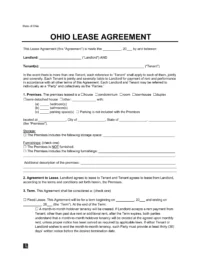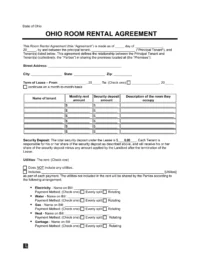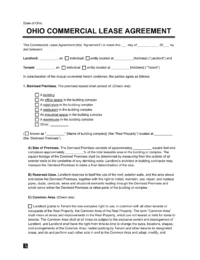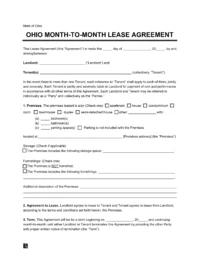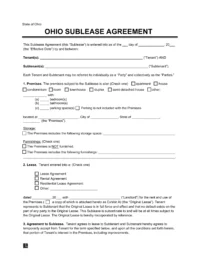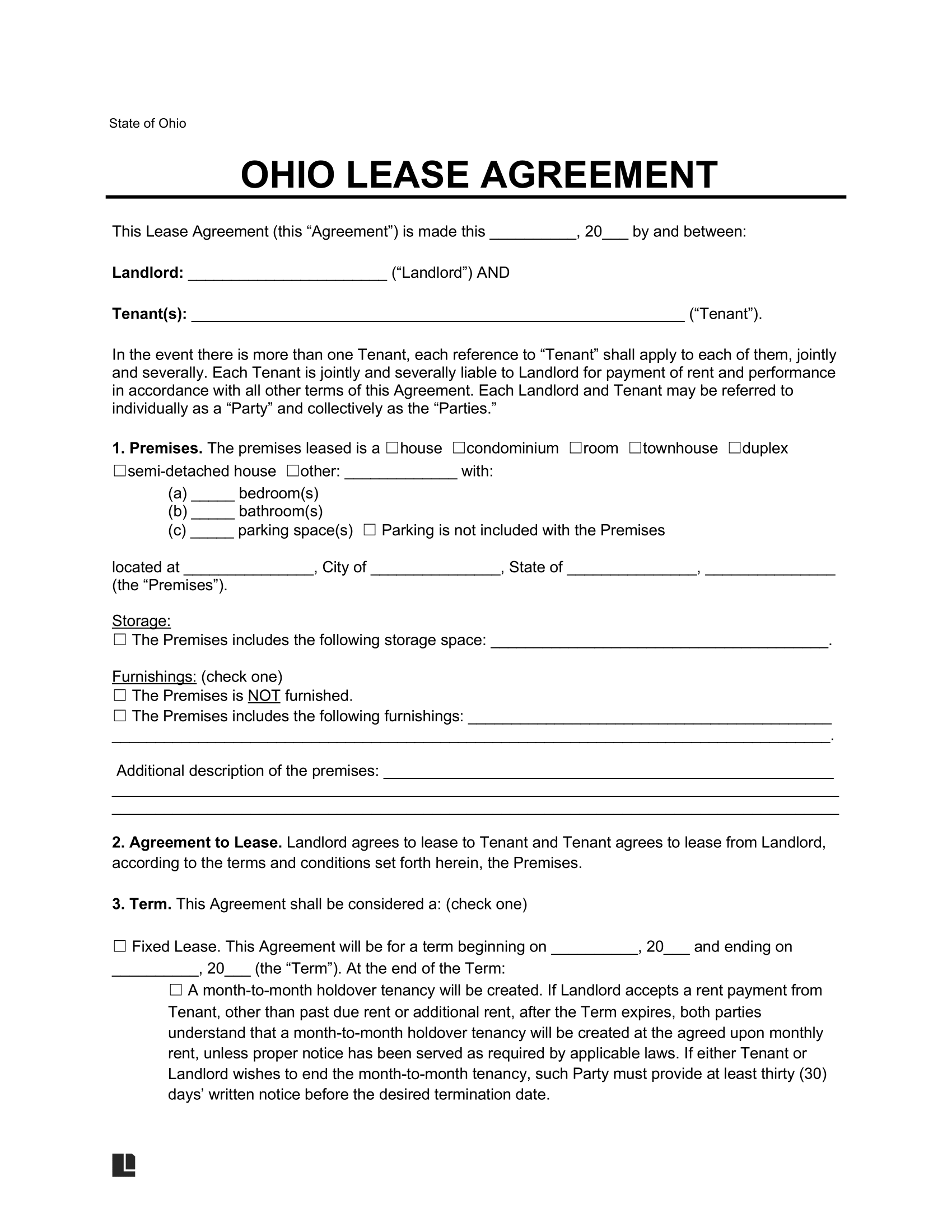An Ohio lease agreement is a contract that a landlord uses to rent out their property under certain conditions to a tenant. It includes information like the tenant’s and landlord’s contact details, the property address, pet prohibitions/requirements, health hazards, and security deposit information.
Rental Lease Laws Overview
- Rent Control: No
- Limit on Late Fees: No
- Late Fees in Rental Agreement: No
- Grace Period: No
- License Required for Landlord: No
Screen tenants with a rental application before finalizing the lease.
By Type (6)
Ohio Standard Lease Agreement
Creates a tenancy for a designated property
Ohio Room Rental Agreement
A documented understanding between a property owner and a renter, outlining the renter's rights and duties for a room.
Ohio Commercial Lease Agreement
A formal agreement where a landlord leases property for commercial activities to a tenant.
Ohio Rent-to-Own Lease Agreement
An arrangement where renters pay towards eventual homeownership.
Ohio Month-to-Month Rental Agreement
Reinstates itself monthly without a fixed expiration date.
Ohio Sublease Agreement
An ancillary leasing contract, enabling the prime tenant to sublet the property, while preserving responsibilities to the original property owner.
Required Lease Disclosures
- Disclosure of Lead-Based Hazards. The only disclosure that landlords have to make within their leases is one that’s required by federal law. Ohio landlords must disclose if the property they’re renting was built before 1978 due to the risk of lead poisoning from the presence of lead-based paint. [1]
- Security Deposit Notice. Security deposits, along with an itemized list of damages, if any, and a receipt of all charges must be returned to the tenant within thirty (30) days of the end of the lease. [2]
Security Deposit
- Maximum Amount: Ohio law doesn’t have a statute defining a limit as to the amount a landlord may collect as a security deposit from the tenant.
- Receipts: Not specified by law.
- Interest Payments: Any security deposit greater than $50 must accrue 5% in interest, and the landlord must pay it annually to the tenant if the tenant lives at the leased property for more than six months. [3]
- Bank Account: The landlord must deposit the security deposit in a separate interest-bearing account. [3]
- Returning Requirements: A landlord must pay back the tenant’s security deposit within 30 days from the end of the lease. [4]
- Withholding Rules: Landlords can withhold security deposit funds for unpaid rent and damages due to tenant noncompliance with the rental agreement. [5] They must provide a written notice itemizing these deductions and return the remaining deposit. [4]
Rent Payments
- Laws: Rent is due on the date specified in the lease agreement; if not, then at the first of the month.
- Rent Control: No rent control laws.
- Late Fees and Grace Period: No maximum late fee or grace period. However, a 3-day notice to pay rent or quit is required before commencing eviction. [6]
- Withholding Rules: If a landlord fails to meet obligations or if a property is found noncompliant with codes, tenants can send a written notice detailing the issue. [7] If the landlord does not fix it within 30 days (or a reasonable time), tenants may pay rent to the municipal court clerk and request a rent reduction until the issue is resolved. [8]
Landlord Right of Entry
- Notice Requirements: A landlord must provide a tenant with reasonable notice before entering a property, and reasonable notice is assumed to be at least 24 hours unless there’s evidence indicating otherwise. [7]
- Keys, Locks, and Security: No specific provisions.
Property Repairs
- Landlord Responsibilities: Landlords must ensure rental units are habitable by maintaining health and safety standards and promptly addressing repair requests.
- Tenant Repairs: If the tenant fails to maintain essential utilities, the landlord may start eviction proceedings with a three-day notice to quit.
- Abandonment: No state-mandated length of time.
Terminating a Lease
- Month-to-Month Tenancy: Can be terminated by providing a 30-day notice to the other party.
- Unclaimed Property: No specific statute.
Sample
Our Ohio lease agreement template is available for download as a PDF or Word file:

